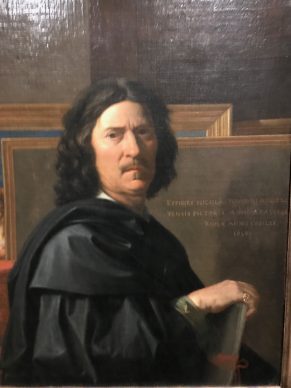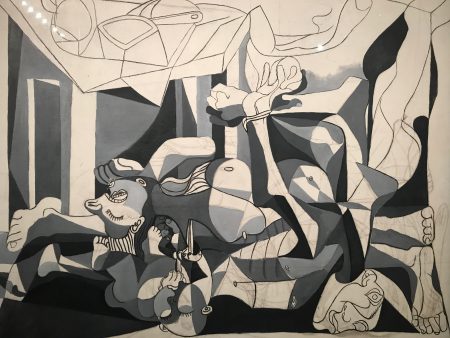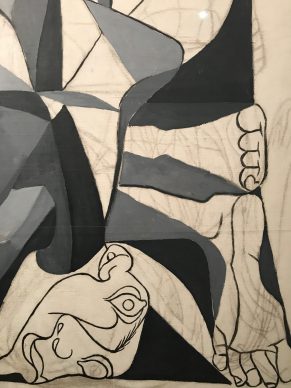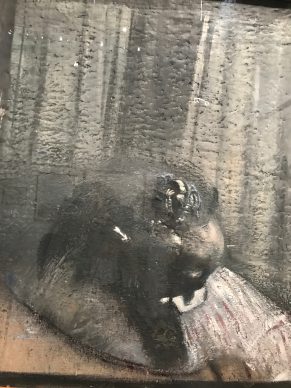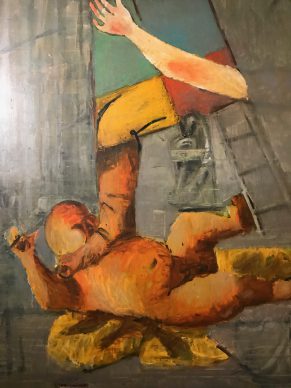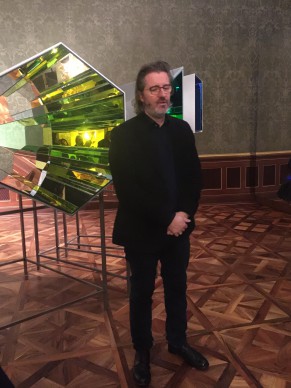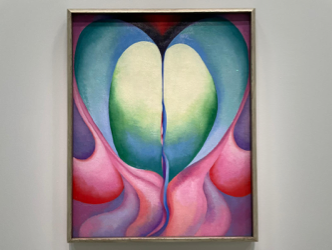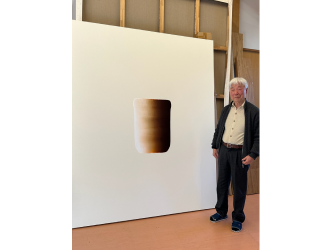But it shares its name with another French speciality: a Renaissance château, home to a long forgotten art history treasure trove.
The Château de Chantilly was bequeathed to the Institut de France (which comprises academies such as the Académie des Beaux Arts) in 1886 by the son of King Louis Philippe, Henri d’Orléans (1822-1897), complete with a fabulous collection of antique paintings.
Chantilly is said to house the second best collection of Old Masters paintings in France, but the donor’s wish was that the artworks should never leave the château.
And so the collection lay dormant and forgotten.
It is well worth the visit to go and admire the works by Raphaël, Watteau, Ingres,Poussin etc. which line the painting gallery, where the canvases all jostle alongside each another in the nineteenth-century style.
If there is one painting in amongst this pantheon of art that has stirred the imaginations of many great artists, it is “The Massacre of the Innocents” by that most Italian of French painters, Nicolas Poussin (1594-1665).
And now, at long last, Chantilly is shaking off the cobwebs.
A remarkable exhibition has opened at the château dedicated to the biblical subject matter of Poussin’s “Massacre of the Innocents” following its restoration.
Featuring some fifty artworks, the show is curated by Pierre Rosenberg, one of the great figures in French classical art and former director of the Louvre, with Laurent Le Bon, president of the Picasso Museum in Paris, in charge of the modern section.
It demonstrates how the seventeenth-century painter, who can be difficult to access visually, has in this case simplified an image to enhance the power of its message.
A screaming mother terrified by the horror of her son’s murder, a soldier who tramples on her baby with extreme cruelty, and the varying effects of light and shadow, the contrasting colours and unusual sense of movement.
Here, Poussin is focusing on the massacre of a single innocent.
He is at the height of his mastery.
The large canvas by the old master resembles a movie still.
One room of the exhibition is dedicated to Poussin’s contemporaries who have dealt with the same subject, such as Guido Reni before him in Rome.
Pierre Rosenberg explains why Poussin’s painting is so important:
We would also have liked to have seen the art market’s most famous “Massacre of the Innocents”, painted by Rubens. Sold at auction for 70 million euros in 2002, it is the most expensive Old Masters painting ever sold and depicts a profusion of bodies gripped by terrifying violence. It is now part of the permanent collection at the Art Gallery of Ontario.
Another important room examines the subject matter’s legacy in the twentieth century.
In 1945, Picasso declares that he has painted his own “Massacre”. The painting has since been referred to as the “The Charnel House”.
He creates a large-scale cubist composition in grey, white and black where the figures are contorted in pain. It is not a far cry from Guernica, and the concentration camps.
Laurent Le Bon speaks about “The Charnel house”
The catalogue points out that direct references to Poussin’s figures appear in Picasso’s sketches for Guernica in 1937. “The Charnel House” now belongs to MoMA.
In 1949 the young Francis Bacon (1909-1992) also paints his own version of the famous Poussin, a painting he already knows well.
When he was about twenty years old he lived near Chantilly, working as a decorator.
He would say of Poussin’s work that it was “the best human cry in painting. His cry made me think. I did hope one day to make the best painting of the human cry.” (1)
He reduced the composition down to the head of a creature that is half-human, half-animal, nothing but a gaping mouth with menacing teeth.
The darkened figure lies in the ashes and screams in horror.
This little exhibition is remarkably powerful.
(1)cited in the exhibition catalogue (edition Flammarion, in French). The Massacre of the Innocents. Poussin, Picasso, Bacon.
- Château de Chantilly. http://www.domainedechantilly.com Until 7 January.
Support independent news on art.
Your contribution : Make a monthly commitment to support JB Reports or a one off contribution as and when you feel like it. Choose the option that suits you best.
Need to cancel a recurring donation? Please go here.
The donation is considered to be a subscription for a fee set by the donor and for a duration also set by the donor.




